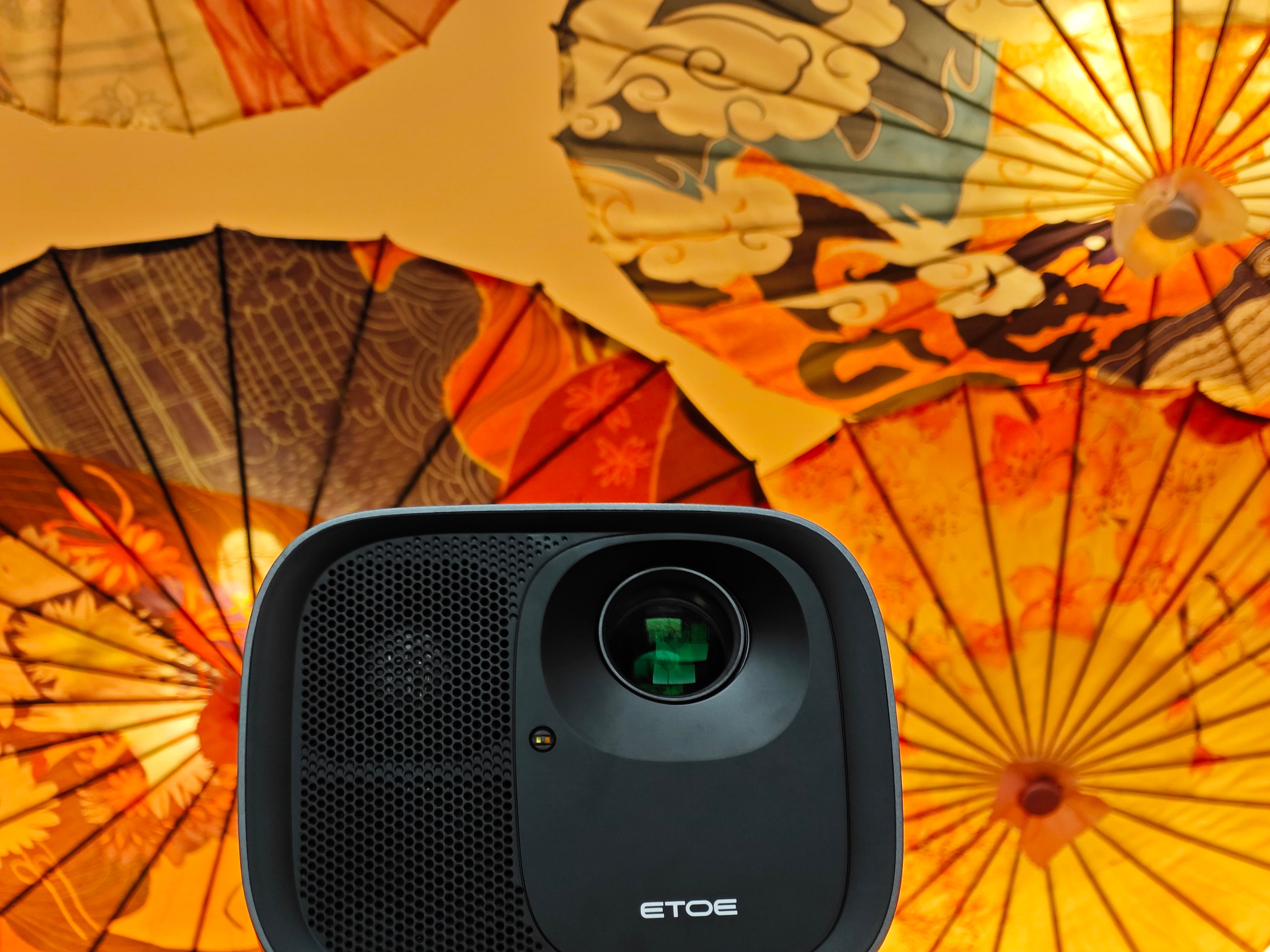In der heutigen, sich rasch entwickelnden Technologielandschaft sind Projektoren zu unverzichtbaren Werkzeugen für Präsentationen, Unterhaltung und Bildungszwecke geworden. Mit diesen Geräten können wir Bilder und Videos auf Bildschirme oder Oberflächen projizieren und so immersive visuelle Erlebnisse schaffen. In diesem Blogbeitrag werden wir uns mit der Struktur von Projektoren befassen, ihre optischen Komponenten besprechen und den innovativen Ansatz von ETOE zur kontinuierlichen Verbesserung der Helligkeit hervorheben. Darüber hinaus werden wir die Fortschritte in der LCD-Technologie untersuchen, die erheblich zu einer verbesserten Leuchtkraft beigetragen haben.
Projektorstruktur:
Um zu verstehen, wie Projektoren funktionieren, ist es wichtig, ihre grundlegende Struktur zu verstehen. Ein typischer Projektor besteht aus den folgenden Hauptkomponenten:
-
Lichtquelle: Zu den Lichtquellen von Projektoren zählen Lampen, LEDs, Laser und Hybridoptionen. Lampen verwenden gasgefüllte Kammern, haben aber eine begrenzte Lebensdauer. LEDs sind energieeffizient und kompakt. Laserquellen bieten hohe Helligkeit und Langlebigkeit. Hybridquellen kombinieren LED- und Lasertechnologien. Die Wahl hängt von Verwendung, Budget und Bildqualitätsanforderungen ab.
Es ist wichtig zu beachten, dass verschiedene Projektormodelle und Hersteller unterschiedliche Technologien und Lichtquellen verwenden können. Daher ist es immer ratsam, die Spezifikationen eines bestimmten Projektors zu prüfen, um die Art der verwendeten Lichtquelle zu verstehen.
Insgesamt haben Fortschritte in der Lichtquellentechnologie zu Verbesserungen bei Projektorleistung, Energieeffizienz und Langlebigkeit geführt. Die Wahl der Lichtquelle hängt von Faktoren wie Verwendungszweck, Budget, Anforderungen an die Bildqualität und Mobilitätsanforderungen ab.
- b) Optisches System: Das optische System eines Projektors spielt eine entscheidende Rolle bei der Erfassung und Manipulation des Lichts zur Erzeugung des projizierten Bildes. Es besteht aus verschiedenen Komponenten, die zusammenarbeiten, um den Projektionsprozess zu steuern. Hier sind die wichtigsten Teile des optischen Systems:
- Linse: Die Linse ist eine der wichtigsten Komponenten im optischen System. Sie bündelt und lenkt das Licht der Lichtquelle auf die Projektionsfläche und bestimmt so die Größe und Klarheit des Bildes. Projektoren können eine einzelne Linse oder mehrere Linsen haben, wie z. B. Zoomlinsen zum Anpassen der Bildgröße oder Fokuslinsen zum Optimieren der Bildschärfe.
- Dichroitisches Prisma oder Farbrad: Bei Farbprojektoren wird ein dichroitisches Prisma oder ein Farbrad verwendet, um das weiße Licht der Lichtquelle in seine Grundfarben (Rot, Grün und Blau) zu zerlegen. Dadurch kann der Projektor durch Kombination und Modulation dieser Grundfarben ein vollfarbiges Bild erzeugen.
- Spiegel und reflektierende Oberflächen: Spiegel und reflektierende Oberflächen werden eingesetzt, um den Lichtweg im Projektor umzulenken und zu steuern. Sie helfen dabei, das Licht von der Lichtquelle durch die Linse auf die Leinwand zu lenken. Diese Oberflächen werden sorgfältig positioniert und ausgerichtet, um eine genaue Bildprojektion zu gewährleisten.
- Polarisationsfilter: Einige Projektoren, insbesondere solche mit LCD-Technologie (Liquid Crystal Display), verfügen über Polarisationsfilter. Diese Filter helfen bei der Steuerung der Lichtpolarisation, sodass der Projektor den Bildkontrast und die Farbgenauigkeit verbessern kann.
- Prisma oder Strahlenteiler: Bestimmte Projektoren können Prismen oder Strahlenteiler verwenden, um Licht aufzuteilen und umzulenken, was komplexere Projektionsaufbauten ermöglicht. Diese Komponenten ermöglichen Funktionen wie Projektionsmapping oder mehrere Projektionen aus verschiedenen Winkeln.
Bildgebungsgerät: Das Bildgebungsgerät in einem Projektor ist die Komponente, die für die Erstellung des visuellen Bildes verantwortlich ist, das auf eine Leinwand oder Oberfläche projiziert wird. In Projektoren werden zwei gängige Arten von Bildgebungsgeräten verwendet:
- LCD (Liquid Crystal Display): LCD-Projektoren verwenden Flüssigkristallplatten als Bildgebungsgerät. Diese Platten bestehen aus winzigen Flüssigkristallen, die elektronisch gesteuert werden können, um den Lichtdurchgang zu ermöglichen oder zu blockieren. Die LCD-Platten sind in einzelne Pixel unterteilt, und jedes Pixel kann die durch es hindurchtretende Lichtmenge steuern, was zur Entstehung des projizierten Bildes führt. LCD-Projektoren sind für ihre Farbgenauigkeit und scharfe Bildqualität bekannt.
- DLP (Digital Light Processing): DLP-Projektoren verwenden ein Digital Micromirror Device (DMD) als Bildgebungsgerät. Das DMD besteht aus einer großen Anzahl mikroskopischer Spiegel, von denen jeder ein einzelnes Pixel darstellt. Diese Spiegel können sich zur Lichtquelle hin oder von ihr weg neigen und das Licht entweder reflektieren oder blockieren. Durch schnelle Modulation der Spiegel erzeugt das DMD das Bild, das auf die Leinwand projiziert wird. DLP-Projektoren sind für ihr hohes Kontrastverhältnis und ihre flüssige Bewegungsleistung bekannt.
Sowohl LCD- als auch DLP-Projektoren haben ihre Vorteile und werden in verschiedenen Anwendungen häufig eingesetzt. LCD-Projektoren sind in der Regel günstiger und bieten eine hervorragende Farbgenauigkeit, sodass sie sich für Präsentationen, Klassenzimmer und Heimkinos eignen. DLP-Projektoren eignen sich hervorragend für kontrastreiche Szenarien wie Kinos und große Veranstaltungsorte.
Kühlsystem: Das Kühlsystem eines Projektors ist für die Regulierung und Ableitung der während des Betriebs entstehenden Wärme verantwortlich. Es umfasst normalerweise Lüfter, Kühlkörper, Luftfilter und Belüftungsöffnungen. Das Kühlsystem verhindert eine Überhitzung und gewährleistet so optimale Leistung und Langlebigkeit des Projektors.
Optische Komponenten:
Die optischen Komponenten eines Projektors spielen eine entscheidende Rolle bei der Erstellung hochwertiger Projektionen. Dazu gehören:
a) Linsen: Projektorlinsen sind wichtige optische Komponenten, die Licht fokussieren und manipulieren, um klare und scharfe Bilder zu erzeugen. Sie haben unterschiedliche Brennweiten und können über Zoom- und Linsenverschiebungsfunktionen verfügen. Linsenbeschichtungen minimieren Artefakte und hochwertige Linsen sorgen für eine genaue Projektion. Sie sind entscheidend für optimale Bildqualität und Projektionsflexibilität.
b) Spiegel: Spiegel in Projektoren lenken das Licht um, optimieren den Lichtweg und ermöglichen die Bildausrichtung. Sie helfen dabei, den Lichtstrahl zu lenken, Trapezverzerrungen zu korrigieren und komplexe Projektionsaufbauten zu erstellen. Spiegel spielen eine entscheidende Rolle bei der Gewährleistung einer genauen Lichtverteilung und Bildqualität.
c) Filter: Filter in Projektoren verbessern die Farbgenauigkeit, die Bildqualität und schützen optische Komponenten. Farbfilter steuern das Farbspektrum, Polarisationsfilter reduzieren Blendeffekte und verbessern den Kontrast und optische Filter verändern die Lichteigenschaften. Staubfilter verhindern Verunreinigungen. Filter spielen eine entscheidende Rolle bei der Erzeugung lebendiger und klarer projizierter Bilder.
Projektoren sind komplexe Technologieprodukte, die für einen effizienten Betrieb verschiedene Komponenten benötigen. Wenn wir uns besser mit Projektoren auskennen, können wir leichter erkennen, welche sich für den Kauf lohnen.




Hinterlasse einen Kommentar
Diese Website ist durch hCaptcha geschützt und es gelten die allgemeinen Geschäftsbedingungen und Datenschutzbestimmungen von hCaptcha.